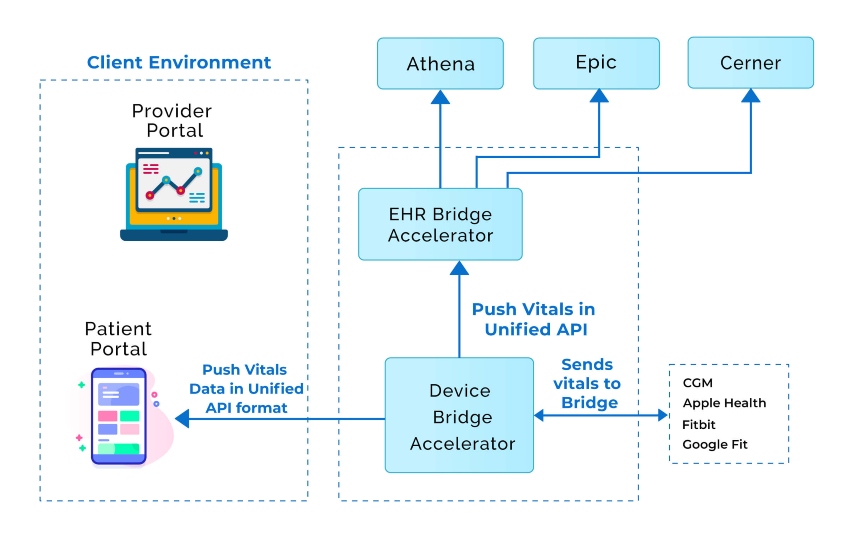Client Requirements
The client was US-based and one of the fastest-growing digital health technology companies. They are providing the software for seamless patient and provider engagement. They are in the development of Practice management software, Telehealth, and Remote Patient monitoring software.
The client wants to integrate their platforms with multiple IoMT devices and EHR solutions to exchange patient health information. Also, the client wants to process data from various devices, and fed manually should be processed, cleaned, and well-managed before transmitting to the client's RPM platform.
Thinkitive Solution
Thinkitive's business analysts and subject matter experts started with the requirement analysis ( Discovery) phase. The Thinkitive team took multiple calls with the client and created detailed requirement documents along with multiple use cases. Thinkitive established a team of professionals with expertise in frontend and backend development.
The thinkitive team has appointed skilled interoperability experts and a well-trained tester. The Thinkitive team has started working on requirement understanding and flows to be integrated. Based on the requirement Thinkitive team has created an EHR integration bridge to integrate with EHR and a device integration bridge to connect devices to their RPM and digital health platforms. These bridges collect data from respective devices, convert it into a required unified format, and transmit it to EHR.

Solution Highlights
-
Device Integration with Patient Mobile App Using Device Bridge
The Thinkitive's team has developed a device bridge by which any health IoMT device can be integrated with a patient mobile app to collect the patient vital. These devices can be connected to the patient's mobile app using Bluetooth or NFC. Data is captured from the device directly via an app and sent to the device bridge API.
-
Device Bridge Integration with Multiple EHRs
To transfer vital information collected from multiple devices and patient mobile app needs to be pushed to different EHRs to make it available for provider review. For this problem, Thinkitive teams have integrated the device bridge and EHR using the EHR integration bridge.
In this case, data from the device bridge is transferred to the EHR bridge in unified APIs. EHR bridge receives this data from API and converts it into a required format in (FHIR or HL7 ) based API that particular EHR requires.
-
Device Bridge Scalability
1. Device bridge is a microservices-based containerized architecture that will communicate via REST API with each other.
2. Device bridge provides a unified API & connects with multiple devices to exchange patient vitals.
3. The device bridge handles the data complexity, processes it, and organizes it in a well-managed data structure by which it will be easy to display data on the provider's dashboard.
-
Device Bridge Advantages
1. Scalable Architecture will reduce data messing and organize data very well
2. Reduced Time & Effort
3. Easily Maintainable
4. One-time integration efforts
5. On-Premise
-
Devices Integrated
1. Google fit,
2. Fitbit,
3. AppleHealth,
4. iHealth,
5. Continuous Glucose Monitoring etc.
Value Delivered
-
Thinkitive has provided this solution by following all HIPAA-compliant guidelines, which will ensure the security of the data to be exchanged.
-
Patient health data exchange makes seamless.
-
Customized middleware works as a Device bridge and is ready to integrate with any Device instantly.
-
Customized EHR middleware works as a bridge and is ready to integrate with any EHRs instantly.
